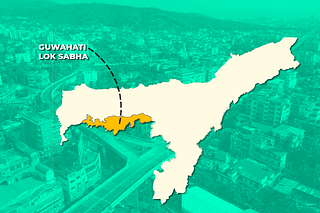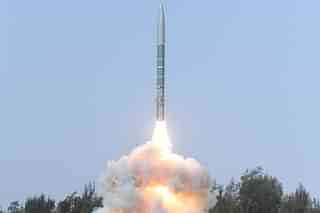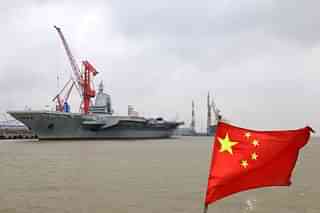Magazine
NDA: Back To Power, Back To Kashmir
Syed Ata Hasnain
Jun 03, 2019, 10:54 AM | Updated 10:54 AM IST
Save & read from anywhere!
Bookmark stories for easy access on any device or the Swarajya app.
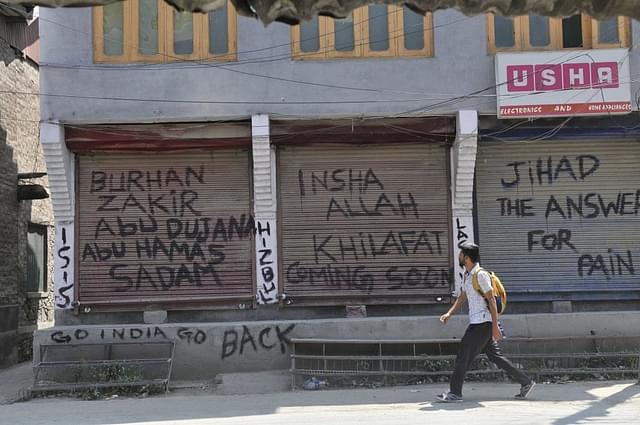
With the National Democratic Alliance (NDA) back in government, national security, one of the issues on which it fought the election is likely to remain a priority. NDA-3 has to dwell on the strengths of NDA-2 and overcome identified weaknesses too. That is how all efficient governments work in continuum when given a second term by the people. Among the major achievements of NDA-2, in the field of security, was the way China was handled in the political-military-diplomatic realm resulting in the Wuhan spirit becoming the guiding light after the standoff at Doklam. Similarly, the equations with the US and the rest of the West were taken to an optimum level and the Middle East handled most sensitively. Towards the end of the tenure of NDA-2, the situation arising from the US threat to Iran posed a dilemma, which is not faced by India alone. These will all need a continuum in handling with dynamism, restraint and balance.
The area where NDA-3 will really need to get down to a hard grind is Jammu and Kashmir (linked with Pakistan) where political experiments during NDA-2 did not succeed although the security situation by end of May 2019 is largely stable. The governor remains a temporary custodian of the state. Pakistan, however, has succeeded in calibrating the environment in J&K from time to time. More could occur, severely challenging the central government on the nature of its response. In other words, even as J&K stabilises, the chances of resurgence of turbulence also remain alive. NDA-3 would need a sustainable and practical strategy on J&K, which is centred on the concept of a balance of hard and soft power.
It’s the politico-military domain which will now need attention. The first basic to be kept in mind is that Operation All Out launched in 2017 was well executed through two years reducing the terrorist footprint. Sustained operations in 2019, including the ones immediately after Pulwama, have succeeded in neutralising 89 terrorists by the latter part of May 2019. The Line of Control (LoC) is comparatively silent although sporadic outbursts are still prevalent. Infiltration is down many notches; by May every year a couple of high profile attempts are always made; it has not happened this year. It’s the recent killing of former Hizbul Mujahideen terrorist Zakir Musa that has temporarily created hype in Kashmir Valley. Musa set up the Al Qaeda surrogate Ansar Ghazwatul Hind, in Pulwama district’s notorious town of Tral after breaking away from Hizbul Mujahideen post the death of Burhan Wani. With his death the last of the notorious local terrorist leaders has been neutralised. Recruitment is reported to be down this year. How much is this result of the control on terrorist financing is yet to be determined.
The security situation is a manifestation of a couple of factors besides just the effectiveness of military operations. Pakistan has apparently taken a step back on active and visual support to the separatist movement in Kashmir which it has been promoting through proxy war. It is not a change of heart but international pressure and the impending Financial Assistance Task Force (FATF) decision on its status as a terrorist supporting state that is forcing it to adopt this stance. The $6 billion loan from the International Monetary Fund has of course come with hidden conditionality on its support to transnational terror. Pakistan Prime Minister Imran Khan has been extending a hand and asking for talks with India; the Pakistan Army too does this on a more informal level but with no commitments on taking a backseat on supporting terror in Kashmir. Internationally, there is concern on the possibility of things going out of control if there is another major terrorist attack in Kashmir and India chooses to respond even more robustly than it did the last time in February 2019. China has gone half way by withdrawing its objections on the proscription of Masood Azhar as an international terrorist. That will contribute to better Sino-Indian relations but China’s ability to influence policy in Islamabad remains questionable.
Apart from the geopolitics, which is marginally influencing the security environment, there is the phenomenon of public exhaustion with stamina for turbulence having reached its limit. An internal security and proxy war related region is a war zone of a kind with special laws and restrictions, which are actually population control measures. These cause an environment of suspicion and tension and normal life cannot be led by the people. It has happened in the past too but resurgence of the same stamina is possible with fresh infusion of radical leadership, funding, ideology and more. The idea that the route of turbulence and violence is the route of separation from India can well reignite, leading to another few years of what has been witnessed for the last 30 years.
On the political front J&K is likely to go to the polls to elect a state government anytime in the next six months. The feasibility of New Delhi and Srinagar being on the same page politically anytime soon appears unlikely. Whatever has to be done to retract the situation to a level of permanent stability has to find some political consensus to back it.
We need to remember that below the threshold of conventional war, Pakistan perceives it can match India’s response. Currently, it is on the back foot for a number of reasons but that situation may not be permanent given its geostrategic importance and the history of the number of times it has been a key state for big powers; the US and China have different reasons to woo it and even Russia is not seen to be reluctant to do that either. It is for this reason that India needs to remember that finding a solution to J&K with Pakistan is not anywhere on the horizon. What we should be aiming is to maximise stable hold of the territories that are under our control and work from there towards eventual integration of the remaining territories in the long term. There are no shortcuts here and patience will always remain virtue.
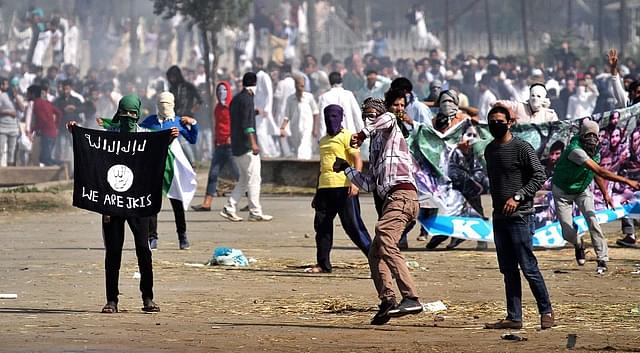
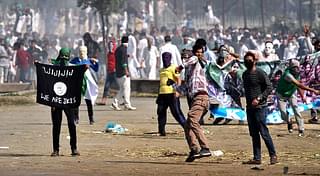
In the backdrop of the above situation, a new stronger government has been elected in India with Prime Minister Narendra Modi, now more experienced and having a clear five-year mandate ahead of him. How must he proceed on dealing with J&K? Firstly, the current situation of seeming stability is temporary and brought on by a combination of factors and not military operations alone. Military operations must continue without any break and no premature withdrawal of the army should take place from areas considered having stabilised. Second, the absence of violence in certain areas and zones is no indicator of stability; mistakes on this have been made in the past. The army must remain as energetic as before on the counter infiltration grid. That is because Pakistan’s stance is not permanent either and infiltration can commence again any time.
Conceptually, the aim of the Centre should be to extend this period of stability gained by different means as long as possible so that it has a maximum window to work in. There will be temptation and pressure by different quarters to immediately take drastic measures to remove special constitutional provisions under which J&K exists today. Everyone supports the eventual rescindment of these when the situation is more conducive. Prudence demands that any triggers that will shorten the window of stability be currently avoided in favour of measures to prevent the rise of another young leadership and any desire to enhance resistance.
The key lies in developing a political consensus but it’s a difficult call given the different aspirations of the two populous areas of Jammu region and the Kashmir region. Until the assembly polls, this will be even more difficult. If a set of all party meetings is convened and a common aim of higher levels of integration and better relationship between regions within the state becomes the theme, it will help build bridges to the estranged elements that are in fairly largely numbers.
Prime Minister Modi’s attitude and approach to J&K has never been negative. He could have undertaken many more drastic measures in the last five years but always cautioned balance; recall his speech on Independence Day 2017. Taking a cue from the Prime Minister, the polity of India must stop subscription to the idea of drastic measures to handle J&K. People have little idea of handling sensitive areas driven by external proxy support. It’s only positive gestures and symbolic messages from Delhi with limited hard measures to allow any space being garnered by terrorists and separatists that will create the conditions for the people to back the idea of being a part of India. When it comes to competing narratives, the separatist narrative has been strong, projecting to the people that azadi is indeed attainable. The national narrative in comparison has been insufficiently played out; that India desires both the territories and people of J&K to be a part of India; that the idea of separation is just not acceptable and India is willing to pursue this for generations; that Pakistan is using the people of J&K for its own strategic advantage and can never offer the type of development and genuine aspirations to pursue a higher quality of life. These sub-narratives need to be spelt out and conveyed repeatedly, instead of rhetoric.
Lastly, here are two additional recommendations for the new government. First, get the Kashmir Pandits to be officially in engagement with the people in Kashmir to facilitate their eventual return with monetary assistance from the Centre. A fledgling effort of 2011 has not moved much beyond. Second, accept that radicalisation is an issue and that the internal conflict has already gone beyond the political domain at least partially into the ideological one. The government can itself do very little about this but can always be in consultation with and take on board patriotic, educated and well-meaning clerics to lead the nation’s perception efforts to rid Kashmir of this scourge.
It’s a plate which is full and the time is appearing right. NDA-3 has a job cut out for it. It needs serious introspection that political experiments have failed in the last few years. There is no gain from new configurations, which could lead to more divide. It is best to pursue consensus, however, much can be achieved. That is the way to potential success in J&K.
Save & read from anywhere!
Bookmark stories for easy access on any device or the Swarajya app.
The writer is a former GOC of India’s Srinagar based 15 Corps, now associated with Vivekanand International Foundation and the Institute of Peace and Conflict Studies.
Support Swarajya's 50 Ground Reports Project & Sponsor A Story
Every general election Swarajya does a 50 ground reports project.
Aimed only at serious readers and those who appreciate the nuances of political undercurrents, the project provides a sense of India's electoral landscape. As you know, these reports are produced after considerable investment of travel, time and effort on the ground.
This time too we've kicked off the project in style and have covered over 30 constituencies already. If you're someone who appreciates such work and have enjoyed our coverage please consider sponsoring a ground report for just Rs 2999 to Rs 19,999 - it goes a long way in helping us produce more quality reportage.
You can also back this project by becoming a subscriber for as little as Rs 999 - so do click on this links and choose a plan that suits you and back us.
Click below to contribute.

